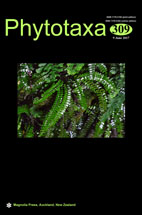Abstract
In this paper, two new species in Hyphodontia, H. bubalina and H. mongolica, are reported as new to science based on morphological characteristics and phylogenetic analyses. Detailed descriptions and illustrations are provided with comparisons among allied taxa. Hyphodontia bubalina has thin cream basidiomata, a monomitic hyphal system with thin- to slightly thick-walled generative hyphae, hyphoid or subulate cystidioles, ellipsoid to subglobose basidiospores measuring as 4–5.3 × 3–4.2 µm. Hyphodontia mongolica is characterized by the partly confluent or branched aculei, a monomitic hyphal system with thick-walled generative hyphae, clavate and tubular cystidia, and ellipsoid basidiospores measuring as 4.9–6.6 × 2.5–3.2 µm. Phylogenetic analyses based on the internal transcribed spacer (ITS) regions which performed by Bayesian (BI), maximum likelihood (ML) and maximum parsimony (MP) methods confirm to place the two species in the genus Hyphodontia.

